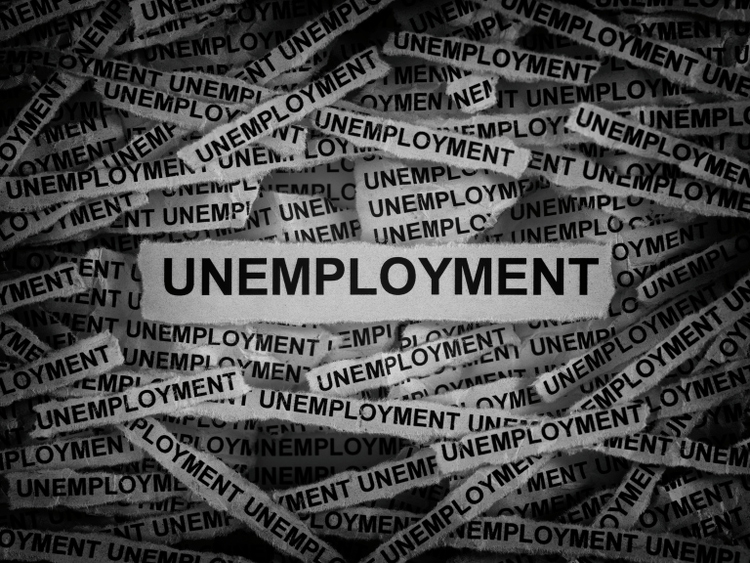Business
Unemployment Rate Rises as Job Market Shows Signs of Weakness

The unemployment rate in the United States is on the rise, reaching its highest level since the immediate aftermath of the pandemic in 2020-2021. Recent data indicates a slow but steady increase in unemployment, coupled with a significant decline in non-farm payroll (NFP) gains across various sectors of the economy. This trend has raised concerns among economists and policymakers about the overall health of the labor market.
According to the latest figures from the Bureau of Labor Statistics, the unemployment rate has climbed to levels not seen in years. The current situation has left many questioning the strength of the job market. While anecdotal reports suggest a weakening demand for labor in nearly every sector, the healthcare industry remains an exception, continuing to show robust hiring activity.
In a press conference following the recent Federal Open Market Committee (FOMC) meeting, Federal Reserve Chairman Jay Powell addressed inquiries about the labor market’s current state. When asked for his thoughts, Powell responded with a somewhat ambiguous remark, indicating the complexity of the situation. His comments reflected the challenges faced by the Fed in navigating economic conditions that are changing rapidly.
Shifting Dynamics in Employment
The job market’s dynamics have shifted significantly since the peak of the pandemic, when unemployment rates surged. Many sectors that initially rebounded quickly are now experiencing a slowdown. Industries such as retail, hospitality, and manufacturing are seeing a decrease in job openings, contributing to the overall rise in unemployment.
The decline in NFP gains highlights the shifting landscape of employment. Recent reports show that employers are hesitant to expand their workforce, with many opting to maintain current staffing levels. The uncertainty in the economy, driven by factors such as inflation and geopolitical tensions, is likely contributing to this cautious approach among businesses.
Despite these challenges, the healthcare sector continues to thrive. Demand for healthcare professionals remains strong, fueled by an aging population and ongoing public health needs. This sector’s resilience amidst broader job market weakness underscores the disparities within the economy.
Future Outlook
Looking ahead, economists are closely monitoring these trends as they may influence future Federal Reserve policy decisions. The Fed’s approach to interest rates and inflation will depend significantly on labor market conditions. As the situation evolves, Powell and his colleagues will need to assess how rising unemployment impacts consumer spending and overall economic growth.
The current labor market picture presents both challenges and opportunities. While some sectors struggle, others, particularly in healthcare, are well-positioned for growth. Understanding these dynamics will be critical for policymakers aiming to support a balanced and sustainable economic recovery.
In conclusion, the rise in unemployment and the decline in job gains signal a potential shift in the U.S. economy. As various sectors navigate these changes, attention will remain on how these developments influence monetary policy and the broader economic landscape.
-

 Education3 months ago
Education3 months agoBrandon University’s Failed $5 Million Project Sparks Oversight Review
-

 Science4 months ago
Science4 months agoMicrosoft Confirms U.S. Law Overrules Canadian Data Sovereignty
-

 Lifestyle3 months ago
Lifestyle3 months agoWinnipeg Celebrates Culinary Creativity During Le Burger Week 2025
-

 Health4 months ago
Health4 months agoMontreal’s Groupe Marcelle Leads Canadian Cosmetic Industry Growth
-

 Science4 months ago
Science4 months agoTech Innovator Amandipp Singh Transforms Hiring for Disabled
-

 Technology3 months ago
Technology3 months agoDragon Ball: Sparking! Zero Launching on Switch and Switch 2 This November
-

 Education3 months ago
Education3 months agoRed River College Launches New Programs to Address Industry Needs
-

 Technology4 months ago
Technology4 months agoGoogle Pixel 10 Pro Fold Specs Unveiled Ahead of Launch
-

 Business3 months ago
Business3 months agoRocket Lab Reports Strong Q2 2025 Revenue Growth and Future Plans
-

 Technology2 months ago
Technology2 months agoDiscord Faces Serious Security Breach Affecting Millions
-

 Education3 months ago
Education3 months agoAlberta Teachers’ Strike: Potential Impacts on Students and Families
-

 Science3 months ago
Science3 months agoChina’s Wukong Spacesuit Sets New Standard for AI in Space
-

 Education3 months ago
Education3 months agoNew SĆIȺNEW̱ SṮEȽIṮḴEȽ Elementary Opens in Langford for 2025/2026 Year
-

 Technology4 months ago
Technology4 months agoWorld of Warcraft Players Buzz Over 19-Quest Bee Challenge
-

 Business4 months ago
Business4 months agoNew Estimates Reveal ChatGPT-5 Energy Use Could Soar
-

 Business3 months ago
Business3 months agoDawson City Residents Rally Around Buy Canadian Movement
-

 Technology2 months ago
Technology2 months agoHuawei MatePad 12X Redefines Tablet Experience for Professionals
-

 Business3 months ago
Business3 months agoBNA Brewing to Open New Bowling Alley in Downtown Penticton
-

 Technology4 months ago
Technology4 months agoFuture Entertainment Launches DDoD with Gameplay Trailer Showcase
-

 Technology4 months ago
Technology4 months agoGlobal Launch of Ragnarok M: Classic Set for September 3, 2025
-

 Technology4 months ago
Technology4 months agoInnovative 140W GaN Travel Adapter Combines Power and Convenience
-

 Science4 months ago
Science4 months agoXi Labs Innovates with New AI Operating System Set for 2025 Launch
-

 Top Stories2 months ago
Top Stories2 months agoBlue Jays Shift José Berríos to Bullpen Ahead of Playoffs
-

 Technology4 months ago
Technology4 months agoNew IDR01 Smart Ring Offers Advanced Sports Tracking for $169










